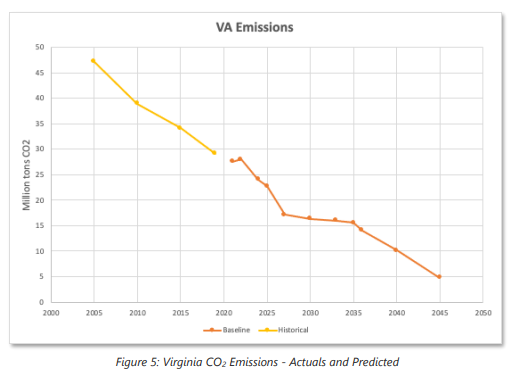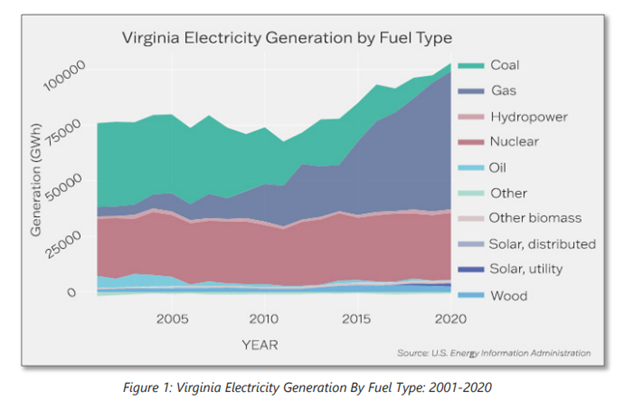Achieving Clean Electricity Generation by 2045
The Virginia Clean Economy Act (VCEA)1 passed in 2020 requires the elimination of most CO2 emissions from Virginia’s electricity sector by 2050. To identify potential strategies for achieving least-cost decarbonization by 2045, the Virginia Department of Energy (Virginia Energy) and the Virginia Department of Environmental Quality (DEQ), with the support of the Georgetown Climate Center, led a research project to model possible strategies. A research team at Resources for the Future (RFF) in consultation with the Weldon Cooper Center for Public Service used RFF’s electricity planning model, Haiku, to explore potential strategies for lowering the costs of meeting VCEA emissions targets.

The modeling results are broadly consistent with the results of other studies of least-cost emissions reduction. Underlying many of the specific suggestions in this report is the principle that flexibility in technology, timing and geography all contribute to lower costs. Strategies that focus directly on reducing aggregate greenhouse gas emissions tend to have lower costs than strategies that specify particular techniques or locations for achieving those emissions.
The model results confirm the general observation that flexibility in compliance reduces ratepayer costs. Policies that specify technologies, local versus regional compliance or overly rigid time paths for reduction raise costs. Policies that focus directly on GHG emissions and emphasize market-based approaches generate the greatest gains.
For the full report, download the file below.



